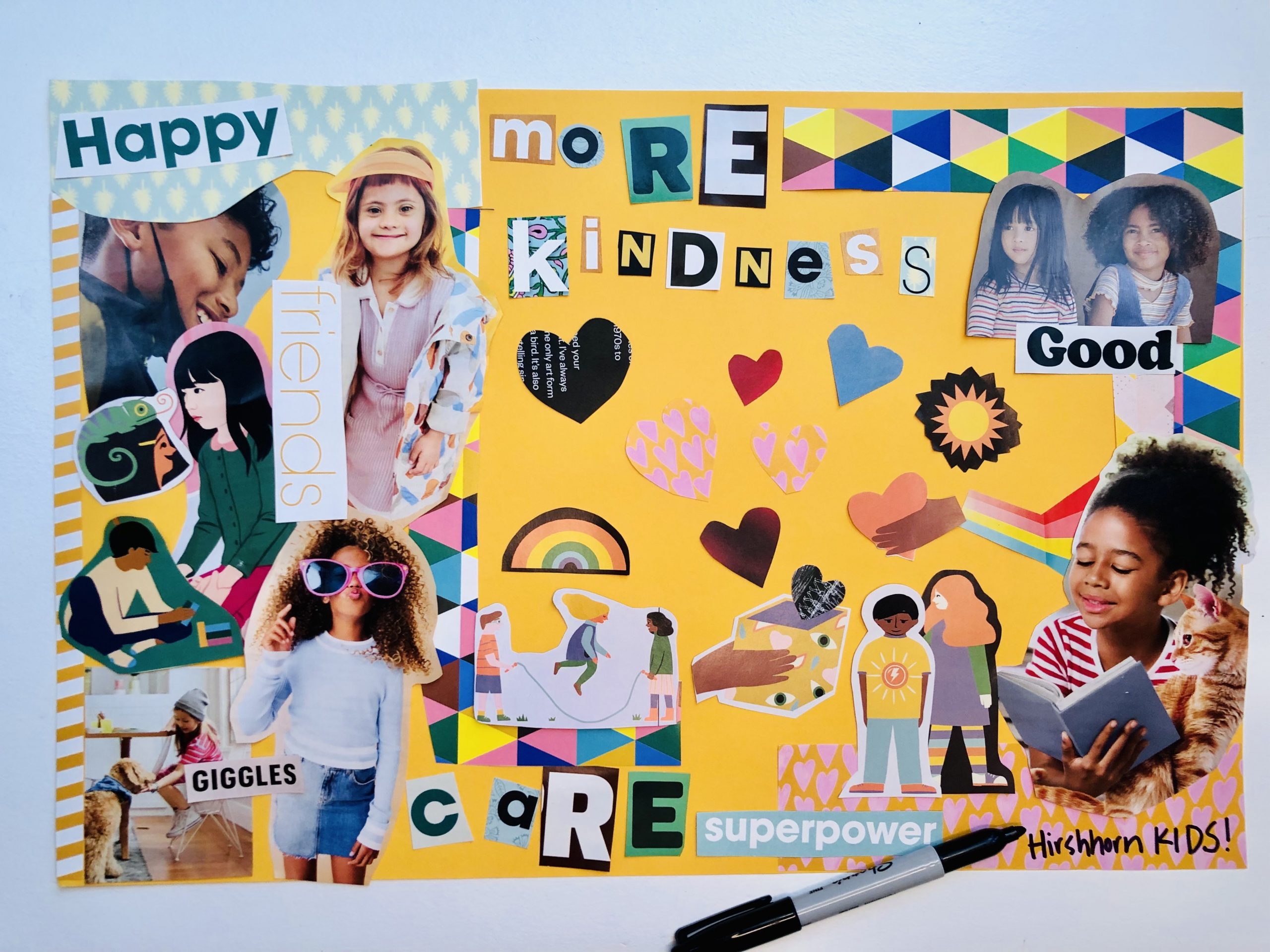Collage Rules - Crafting Unique Art Pieces
So, it seems like everyone has been having a rather good time lately, what with spring break just behind us and all those fun videos starting to pop up. This particular week, we saw some truly creative moments from a school out east, where folks were just letting loose and having a blast. It brings to mind, in a way, how art can feel like that too – a chance to really express yourself and just have fun with it.
You know, for a lot of people, the idea of making art can feel a little bit, well, formal. Like there are all these secret codes or special ways you have to do things. But what if I told you that one of the most freeing ways to create actually has some pretty neat guiding principles? We're talking about collage, of course. It’s a medium where you get to combine different bits and pieces, like paper, bits of cloth, photographs, and really anything you find interesting, to make something completely new and all your own.
What we're going to talk about today are some simple ideas, some kind of informal "collage rules," that can help you put together truly striking works. These aren't really strict laws that you absolutely must follow, more like helpful suggestions that can make your art feel more balanced and interesting. It’s a bit like learning to ride a bike; you get some pointers, but then you just go for it and find your own path. We'll give you a quick run-through, covering everything from finding your bits and bobs to giving your finished piece that special touch. So, go ahead and grab your scissors, or maybe just get your screen ready, because we’re about to explore how to make some really cool stuff.
- Sex Positive Movierulz Telugu Exploring A New Era Of Cinema
- Ultimate Guide To Movie Rulz Everything You Need To Know
- Movierulzht Your Ultimate Guide To Online Movie Streaming
- Aubreigh Wyatt Note A Comprehensive Look At Her Life And Legacy
- Carlos Almanzar The Rising Star In The Entertainment Industry
Table of Contents
- What is Collage Art, Really?
- Finding Your Materials - The Start of Your Collage Rules Adventure
- How Can Composition Guide Your Collage Rules?
- The Rule of Thirds - A Key Collage Rule
- Beyond the Basics - More Collage Rules for Arrangement
- Are There "Rules" for Freedom in Collage?
- Can Digital Tools Help with Collage Rules?
- Making Memories - Digital Collage Rules
What is Collage Art, Really?
Collage art, you know, is really just a playful and inventive way to express yourself through art. It’s about bringing together different things, like pieces of paper, cloth scraps, old pictures, and even other bits you might find, to build something truly one-of-a-kind. Someone once put it rather well, saying it’s "a way of putting together a piece of art by sticking onto a single flat surface various things not usually found together." This could mean, for instance, a clipping from a magazine, a piece of an old map, or maybe even a dried leaf. It's about seeing new possibilities in everyday items, which is, in some respects, a foundational idea for understanding any collage rules you might come across.
When you think about it, making a collage is a super enjoyable way to try out different shapes and textures. It’s not just about what you stick down, but how those different bits talk to each other on the page. You get to play around with how things fit, or don't fit, together. This approach can be pretty liberating, especially if you've ever felt a bit stuck with traditional drawing or painting. It’s a different kind of challenge, one that often feels more about discovery than following strict instructions. And that, really, is a big part of the appeal, allowing you to explore your own special way of seeing things.
Finding Your Materials - The Start of Your Collage Rules Adventure
So, where do you even begin with this kind of art? Well, it all starts with your materials, doesn't it? A collage is, at its heart, a piece of art made from many different things. Think about paper, newspaper clippings, photographs, fabric bits, and all sorts of other objects you might just stumble upon. The beauty of it is that almost anything can become part of your artwork. You could use old letters, ticket stubs, dried flowers, or even bits of packaging. It's a bit like going on a treasure hunt, actually, where every little find could be the perfect piece for your next creation. This exploration of materials is, in a way, one of the first, unspoken collage rules.
- American Pickers The Life And Journey Of Frank Fritz
- Exploring Movie Roulz Your Ultimate Destination For Movie Streaming
- Are Tiko And Moon Back Together A Comprehensive Look At Their Relationship
- Movierulzin Your Ultimate Guide To Streaming Movies Online
- Frank Fritz Of American Pickers The Journey Of A Treasure Hunter
To get started, you really just need to open your eyes to the world around you. What textures do you like? What colors catch your eye? Do you have a pile of old magazines just sitting there? Maybe some fabric scraps from a sewing project? These are all wonderful starting points. You don't need anything fancy or expensive. The most interesting collages often come from the most unexpected sources. It’s about seeing the artistic potential in everyday items, which is, you know, a pretty cool skill to develop. And as you gather your bits, you'll naturally start to think about how they might fit together, which leads us to the next big idea in making collages.
How Can Composition Guide Your Collage Rules?
When you first sit down to make a collage, it's often helpful to think about how you're going to arrange everything. This is what we call "composition," or sometimes even "curation," which just means thoughtfully choosing and placing your pieces. It’s about making sure your artwork feels balanced and interesting to look at. You might be wondering, "Are there specific ways to arrange things that just work better?" And the answer is, well, yes, there are some ideas that people have found helpful over time. These are the kinds of informal collage rules that can really make your work sing, giving it a sense of purpose and flow.
For example, you could try out various ways of arranging your items. It's not about being rigid, but more about having some tools in your artistic toolbox. Thinking about how the eye moves across your piece, or where you want the main focus to be, can really change the feel of your finished artwork. It's a bit like setting up a room; you want everything to have its place and for the whole space to feel inviting. Experimenting with different arrangements is, in some respects, a key part of finding your own artistic voice and making your collages truly stand out.
The Rule of Thirds - A Key Collage Rule
One of the most well-known ideas for arranging things in art is something called "the rule of thirds." For this one, you basically imagine your picture surface divided into nine equal sections by two lines going across and two lines going down, like a tic-tac-toe board. The idea is that if you place important parts of your collage where these lines cross, or along the lines themselves, your artwork will often feel more balanced and interesting. It's a pretty simple concept, but it can make a big difference in how your finished piece looks and feels. This particular collage rule is used by artists across many different mediums, not just collage.
So, instead of putting your main subject right in the middle, you might try moving it slightly off-center to one of those intersection points. Or, if you have a strong line in your collage, like the edge of a building or a horizon, you could try lining it up with one of the imaginary grid lines. It just gives your eye a little something extra to look at, creating a more dynamic feel. It's not a hard-and-fast law, mind you, but more of a gentle suggestion that often leads to pleasing results. You know, it's just one of those little tricks that can really help you arrange your elements in a way that feels natural and engaging.
Beyond the Basics - More Collage Rules for Arrangement
Beyond the rule of thirds, there are other ways to think about arranging your pieces. The text mentions "one point" as another technique, which typically refers to one-point perspective, where all lines seem to lead to a single spot, creating a sense of depth. While that's more common in drawing, in collage, it can mean creating a strong focal point that draws the eye right to it, with other elements radiating out or pointing towards it. It's a way to guide the viewer's gaze, making sure they see what you want them to see first. This kind of visual guidance is, you know, another helpful principle in the collection of informal collage rules.
You can also think about things like contrast – putting light next to dark, or rough textures next to smooth ones. This creates visual excitement and helps different elements stand out. Or consider repetition, using the same shape or color multiple times to create a rhythm. And then there's balance, which isn't always symmetrical. You can have an informal balance, where different sized or weighted elements are distributed in a way that still feels stable and pleasing. These are all just different ways to approach the puzzle of putting your pieces together, helping you create something that truly feels complete and considered. It's about playing with what feels right, really.
Are There "Rules" for Freedom in Collage?
Now, this might seem a little bit confusing, talking about "rules" when the very idea of collage often feels like pure freedom. And you're right, in a way! The beauty of collage is that it often frees you up from the more traditional "rules" of drawing or painting. You don't have to worry about getting proportions exactly right, or mixing the perfect shade of paint. Instead, it allows you to explore your unique way of seeing and creating without those kinds of pressures. It's a space where you can just be, well, you, and let your imagination run a little wild. This sense of liberation is, perhaps, the most important "rule" of all when it comes to making collages.
So, while we talk about things like composition and materials, remember that these are just tools to help you. They aren't meant to restrict you. The real goal is to create something that feels authentic to you, something that expresses your ideas or feelings. It’s about experimenting with shapes, colors, and textures in a way that feels good. Don't be afraid to try something unexpected, or to combine things that seem totally unrelated at first glance. That's where some of the most interesting art comes from, anyway. It's about letting go a little, and just enjoying the process of making something new.
Can Digital Tools Help with Collage Rules?
It's interesting to think about how art has changed, isn't it? These days, you don't even need scissors and glue to make a collage. There are so many online tools that let you create amazing pieces with just a few clicks. It's almost like having a whole art studio right on your computer or phone. These digital platforms can make creating a wonderful collection of memories, or a brand-new art piece, really quite simple. They take some of the fuss out of the process, letting you focus more on the creative side. This shift to digital means that even the traditional collage rules can be applied in a whole new way, or sometimes even automated for you.
These online tools often come with a whole bunch of helpful features. You can usually pick from thousands of ready-made templates, which are like pre-designed layouts that you just drop your pictures into. Then there are grids, which help you line things up perfectly, a bit like a digital version of the rule of thirds. You can also add fun stickers, different text styles, and cool effects to your photos. Some even have smart tools that use artificial intelligence to suggest layouts or combine things for you. It's a really accessible way to get into collage, whether you're a seasoned artist or just starting out. You know, it really opens up a lot of possibilities for creating art.
Making Memories - Digital Collage Rules
One of the really nice things about digital collage makers is how easy they make it to work with your photos. You can combine your favorite pictures into truly lovely collages, making a visual story of your precious memories. Imagine taking all those holiday snaps or family moments and effortlessly turning them into a creative piece of art. It’s not just about making something pretty; it's about preserving and presenting your experiences in a fresh and engaging way. And many of these tools let you save your creations and share them online with friends and family, or even use them as backgrounds for your devices. This modern approach to collage still follows some of the core visual collage rules, just with different tools.
These platforms often give you lots of ways to make your digital collages truly your own. You can customize borders, pick from different smart layouts, and even use them for personal projects or for something a bit more business-like. The whole process is usually very quick, letting you transform your images into art in just seconds. Whether you want to bring together pictures of your family, or showcase your latest adventures, these digital helpers are there to make it happen. It’s a pretty neat way to express yourself, and it shows that the spirit of collage, which is about combining things to make something new, is very much alive in the digital space, too.
- Movierlz Your Ultimate Destination For Streaming Movies Online
- Movierulztv The Ultimate Destination For Movie Lovers
- Shiloh Nouvel Joliepitt The Life And Journey Of Angelina Jolie And Brad Pitts Daughter
- Kehlani Real Name Unveiling The Identity Of The Rb Sensation
- Air Astana Incident 2024 An Indepth Analysis

Make Your Own Collage Layout

Collage - Alchetron, The Free Social Encyclopedia

Collage For Change - Hirshhorn Museum and Sculpture Garden | Smithsonian